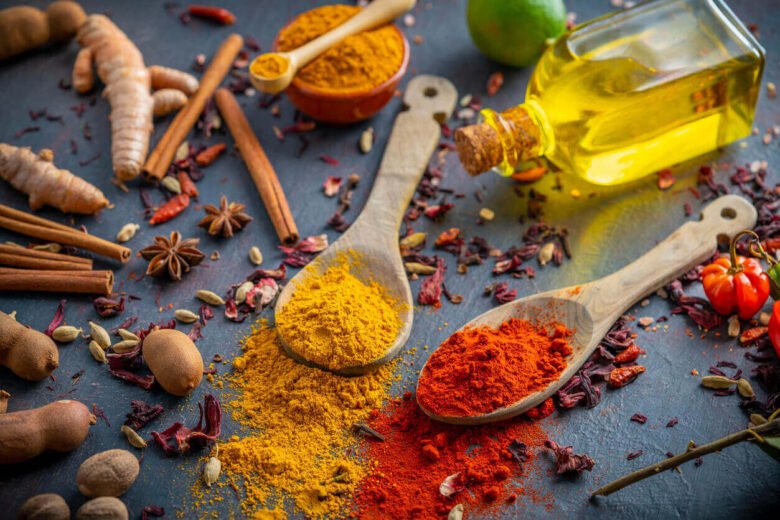Home remedies are medications or tonics made at home that are used to treat various health issues, often at reduced costs compared with commercial offerings and as an effective complement or replacement to conventional medical therapy.
Herbal medicines should never replace professional medical advice, and should always be taken carefully so as to avoid interactions with prescribed medication.
1. Ginger
Ginger’s anti-inflammatory compounds help lower pain signals from your body, making it a natural alternative to over-the-counter drugs for headaches, arthritis and muscle pain relief. Furthermore, ginger contains powerful digestive properties which can help settle nausea and facilitate digestion.
Last, this remedy can also be used as a cough syrup to clear away lung congestion and combat respiratory diseases like influenza. Due to its antiviral and antioxidant properties, its use will also help protect against infections that affect respiratory systems such as this virus.
Other home remedies to relieve cold and flu symptoms include steam inhalation, honey, lemon (to combat thrush) and pelargonium – an herbaceous flowering plant commonly used for herbal medicine – among others. All these can be combined with restful sleep, proper diet and plenty of fluids to speed recovery.
Other helpful home remedies for cold and flu include probiotics found in yogurt, miso paste and kimchi which aid digestion to combat diarrhea caused by infection or antibiotic use; vitamin C which fights off viruses; but most importantly getting plenty of rest will strengthen immunity and accelerate recovery time.
2. Peppermint
Peppermint essential oil (Mentha piperita) can provide relief without having to make a trip to a pharmacy. Peppermint essential oil has multiple beneficial properties including analgesic, antibacterial, cholagogue, emmenagogue, expectorant nervine stimulant properties.
Betaine has long been used as an herbal remedy to ease nausea and stomach problems, relieve spasms in the GI tract, reduce back pain when applied topically or mixed into massage blends, calm coughs, reduce mental fatigue, stimulate circulation and increase energy levels – among many other uses. Furthermore, homemade cleaning sprays using Betaine may deodorize and clean homes as a deodorizer and sanitizer simultaneously.
Menthol’s cooling effects may help soothe itching caused by allergic reactions like hives and poison ivy, while its sedative properties may soothe headaches. You can take orally taken dietary supplements or mint extract for relief of heartburn, morning sickness and IBS symptoms as well as soothing tension headaches. Please use natural remedies as supportive measures alongside professional medical treatment rather than as replacement drugs.
3. Turmeric
Turmeric (Curcuma longa), is an offshoot of ginger that has long been utilized both as food and medicine across Asia, especially India, Southeast Asia and other regions for over 4000 years. This plant’s yellow-orange root rhizome has long been recognized for its anti-inflammatory and pain relieving benefits due to curcumin as its active ingredient.
Research suggests that turmeric could play a vital role in helping prevent heart disease by lowering cholesterol and triglycerides, improving blood circulation, reducing inflammation, relieving arthritis symptoms as well as treating IBS/Colitis conditions.
However, turmeric should be taken with caution when combined with certain medications. Blood thinners should ideally avoid it due to potential interactions as turmeric may slow bleeding. Pregnant women and breastfeeding mothers should also steer clear as larger quantities might induce menstruation or stimulate uterus to put pregnancy at risk. Ingesting it in smaller amounts might not cause harm but larger ones could stimulate menstruation or stimulate uterus leading to miscarriage or stimulation of uterus which might put pregnancy at risk; additionally gallbladder problems worsen so it should be avoided by anyone suffering from gallstones or bile duct obstruction; additionally it might lower your blood sugar levels so people with diabetes should monitor closely their glucose levels closely when taking turmeric supplements or medications; both types should use caution with their own medical condition before ingesting turmeric products to ensure safe consumption!
4. Garlic
Garlic (Allium sativum) is an edible bulbous plant belonging to the Amaryllisaceae onion family, often with close relatives such as leeks, shallots and chives as close relatives. A beloved classic in many cuisines due to its pungent aroma and taste. Used both as flavoring agent and medicinal remedy; with the sativum portion responsible for creating its distinctive odor.
Modern research has demonstrated that allicin can play a vital role in helping prevent colds as well as numerous cardiovascular conditions like atherosclerosis, hypertension and diabetes by acting to decrease oxidative stress levels in our bodies. Allicin is responsible for this beneficial action.
Studies have linked garlic with reduced risks of gastric and breast cancer; however, evidence supporting this link remains limited and some concerns exist regarding trial quality and potential influence from supplement companies on results. Furthermore, some individuals may be allergic to garlic; due to this allergy concern it’s wise to exercise caution when using it; traditional medicine remains recommended when dealing with severe or complex conditions.
5. Chamomile
Chamomile is a flowering herb belonging to the Asteraceae (daisy or sunflower) family that can be found all around the world. This fragrant perennial plant is best known for relieving anxiety and soothing the stomach; many people enjoy drinking warm chamomile tea before sleeping for enhanced restful restful restful restful restful restful nights sleep.
This aromatic herb boasts anti-inflammatory properties and can effectively treat eczema, psoriasis and rosacea. Additionally, its skin-protective flavonoids help prevent sun damage and premature aging; additionally it has powerful anti-bacterial and anti-inflammatory actions which soothe burns or mild scalds with no side effects.
Chamomile boasts antioxidant activity that can scavenge free radicals and decrease oxidative stress levels in the body, potentially helping prevent cancer. Furthermore, preclinical models have revealed antidiarrheal and antiulcer actions of Chamomile.
German Chamomilla (Matricaria Chamomilla L.) and Roman or English Chamomile (Chamaemelum nobile syn. Anthemis nobilis L.) are two main species used as medicinal herbs, with both having similar essential oil compounds with beneficial medicinal properties that can be extracted. Chamomile can also be found as an ingredient in traditional, unani and homeopathic preparations.



